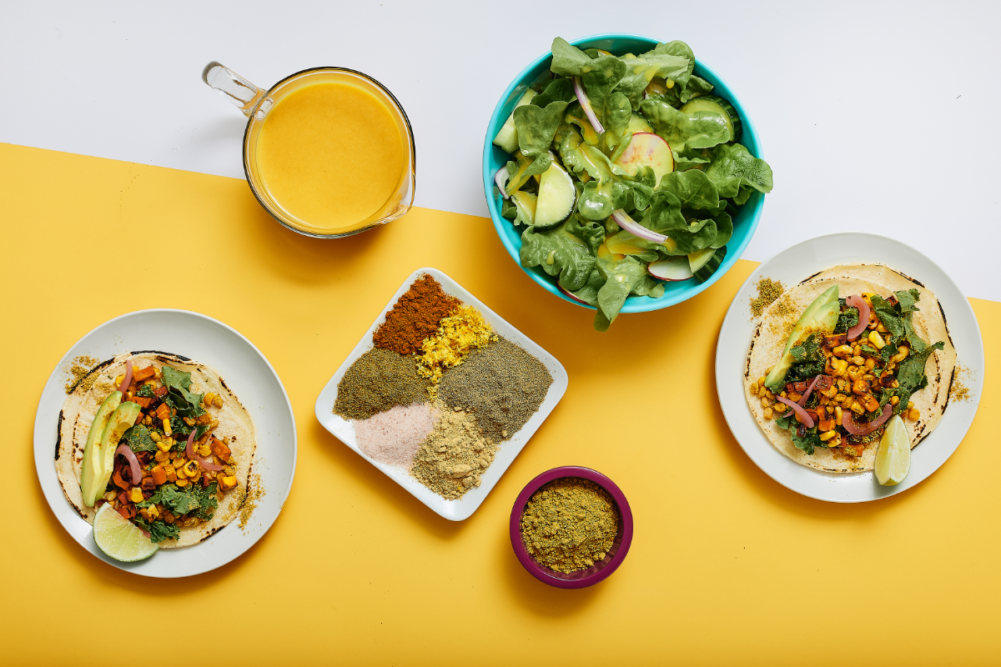HUNT VALLEY, MD. — Edible flower buds, crisped chilies and seaweed could factor into upcoming flavor innovation, according to McCormick & Co.’s 21st annual Flavor Forecast.
This year’s four flavor trends invite comforting global flavors to the table, move plants further into the spotlight, dive into fresh coastal ingredients and promote wellness through mindful eating.
The humble nosh theme is inspired by “nashn,” the Yiddish word for nibbling. It combines rising global flavors with the trend toward comfort foods. Key flavors include the Indian spice blend chaat masala, the Malaysian jam pandan kaya and crisped chilies.
Chaat masala offers a savory flare combined with a zing of lemon. It may add a unique twist to comforting foods like loaded fries or lemonade. Pandan kaya is made with pandan, coconut and eggs. It may add a creamy texture and vibrant green color to comforting sweets like donuts and fruit tarts.
Chilies appeared in last year’s flavor forecast as part of the spicy revolution theme, which focused on creative pairings of heat appearing in cocktails, baked foods and marinades. They also made the 2014 flavor forecast as part of the chilies obsession theme, which highlighted new techniques like grilling, smoking, pickling, fermenting and candying to tease out their flavor potential. This year could see fried and crisped chilies bring a spicy flavor and crunchy texture to comfort foods ranging from sauces and condiments to dumplings.
“The pandemic sizably shifted the way we have lived our lives over the past year, yet food continues to be a way to bring people together, even virtually.” — Kevan Vetter, McCormick
The theme of plants pushing boundaries highlights plant-based ingredients that deliver brilliant color and hearty texture. Vegetables such as hearts of palm, cactus and lobster mushrooms may bring a hearty texture to plant-based meals, while charred vegetables may be used in sauces to give dishes a darker color and rich flavor profile. Botanical ingredients like juniper, pine, fir, sage, cactus rose and edible flower buds may elevate sensory experiences, while natural ingredients like ube (purple yam) and carrots add a vibrant color in a wide range of foods and beverages.
Less explored ingredients from fresh and salt water also will play a role in culinary innovation, McCormick predicted. This trend uproots underwater botanicals like seaweeds and algae that infuse snacks, meals and beverages with an earthy flavor. Key flavors include dulse (red sea lettuce flakes), spirulina, (blue-green algae) and sea grapes (soft, green algae).
The last trend, physiological eating, taps into the reemergence of mindfulness and intention. Inspired by ancient practices and beliefs for mind-body balance, it includes flavors that promote a sense of harmony, growth and self-love. It also focuses on the Ayurvedic principles, which use six tastes (sweet, sour, salty, bitter, astringent and pungent) to achieve balance, and warming and cooling techniques to provide comfort to the body. Key flavors include coriander, lemon, sea salt, cumin, turmeric and ginger.
Ancient flavors also appeared in the 2016 flavor forecast, which highlighted ancestral ingredients like herbs and amaranth, an ancient grain of the Aztecs, showing up in modern dishes.
McCormick team members across five global regions connected with culinary experts to uncover the four flavor trends. The research included a series of virtual, interactive at-home culinary experiences led by chefs exploring a wide range of flavors.
“The pandemic sizably shifted the way we have lived our lives over the past year, yet food continues to be a way to bring people together, even virtually,” said Kevan Vetter, executive chef and director of culinary development at McCormick & Co. “Despite global travel restrictions, lockdowns, and logging in from vastly different time zones, it was moving to see everyone committed to our mission to study emerging trends and identify the flavors that will undoubtedly spark inspiration for both the home cook and professional chef for years to come.”

